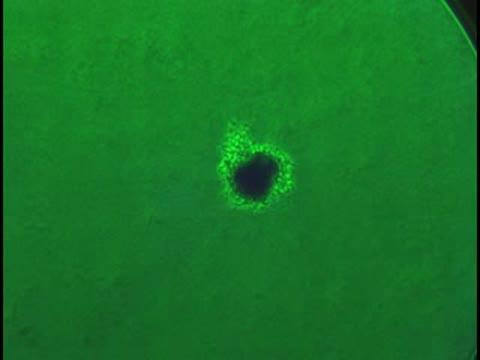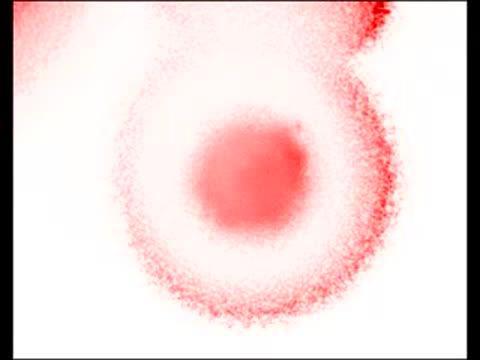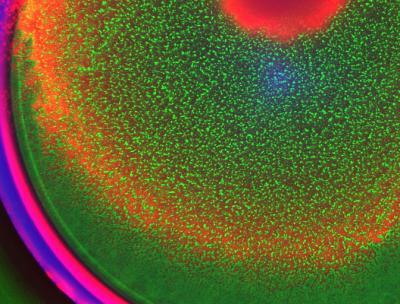"By serving as a timing cue, the morphogen 'on' signal enables the system to sense and respond to the size of the environment," said You. "The larger the area, the longer it takes for the morphogen to accumulate to a high enough concentration to trigger pattern formation. As such, a larger area will lead to a larger ring pattern."
Follow-up experiments confirmed the model, and provided a simple example of how growing organs may be able to sense the size of their environment -- and when it's time to stop growing -- potentially solving a persistent mystery in developmental biology.
You and his colleagues plan to use the artificial gene circuit to create more complex biological patterns, both to further explore general principles of pattern formation and to serve as scaffolds for making new materials, such as thin metal films for energy applications.

Growth of a bacterial colony (green) over about 60 hours is shown. The blue "on" signal spreads outward from the center; red represents the "off" signal triggered over time.
(Photo Credit: Stephen Payne, Duke University)

This video shows the growth of a bacterial colony over about 60 hours, with red "off" signal forming a core and shell structure over time.
(Photo Credit: Stephen Payne, Duke University)

Ring patterns form in a micro-colony of engineered bacteria.
(Photo Credit: : Stephen Payne, Pratt School of Engineering, Duke.)
Source: Duke University